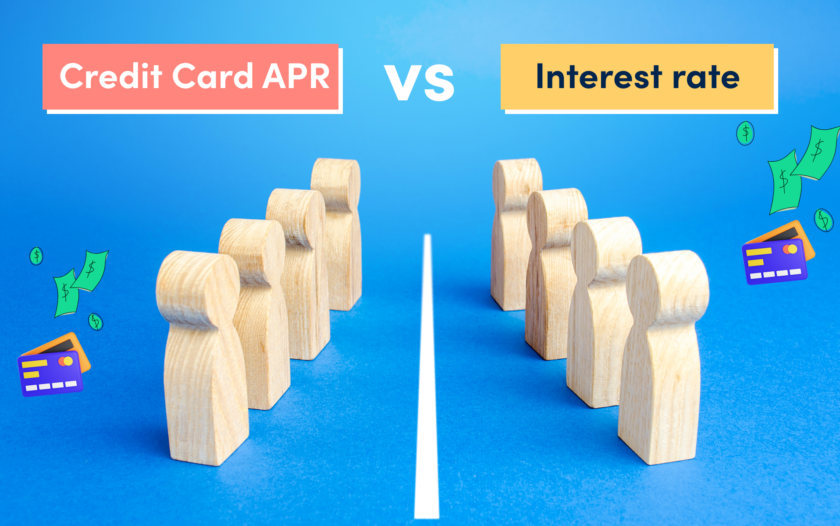Understanding Credit Card APRs and Interest Rates
About Trevor
Trevor Mahoney is a financial services writer and content creator based out of Los Angeles, California. He holds a Bachelors of Science in Finance from Santa Clara University. In his free time, he enjoys hiking and lounging on the beach.
Read full bio
At a Glance
When it comes to the world of credit cards, there are two main terms that are wrongly used interchangeably: annual percentage rate (APR) and interest rate. The average borrower assumes that these two terms are the same, given that their values can sometimes be, but there are distinct differences between the two that all borrowers should be aware of when reviewing different credit card rates.
In this article, you’ll learn:
What’s the difference between APR and interest rate?
An APR vs. interest rate credit card breakdown is complicated because both values essentially tell a borrower the same thing: they are the cost to borrow funds from the lender. However, an APR is a broader and more accurate depiction of what a borrower will be paying. This is due to the fact that an interest rate is the pure and simple cost of borrowing money. However, an APR is the interest rate plus any fees or other associated costs the lender adds on.
For many credit cards, the APR and the interest rate will be exactly the same. With that said, there are certain types of credit cards, along with other debt, which have differing APRs and interest rates due to hidden fees and other costs outlined in the terms of a contract.
How are interest charges and APR calculated?
The method by which an APR or interest rate is calculated varies depending on the type of credit that is being considered. A person’s credit score, the type of loan or credit, the amount put down, and the terms of the contract all factor into the calculation. In most cases, for credit cards, the information in your application such as income level and credit score, as well as general credit history, will be used to determine the value.
When looking at how APR is calculated, the general rule of thumb is that the higher your credit score, the lower your APR will be. Most credit card issuers list an APR range that you will be offered if you apply for the card, which can serve as a general indicator for whether or not it may be a fit.
When credit card APRs don’t matter
In the majority of cases when dealing with credit cards, the difference between APR and interest rate will not matter. This is because there aren’t often extra fees or costs associated with taking out a credit card, which means the majority of credit cards will have equal APRs and interest rates. However, other forms of debt, such as looking at what is a loan’s APR vs. interest rate, will have differences between the values due to things such as prepayment penalties, underwriting fees, and other costs.
How to find your credit card’s APR?
The best way to find the APR that is associated with your credit card is to simply look in the terms and conditions of your contract. Generally, when you first apply for a card, you will also receive notice of what the APR will be if you accept the offer right in the email or written notification.
Why is APR higher than interest?
For certain types of debt, APR will be higher than the interest rate offered. This is due to the fact that interest rates are a pure and simple calculation of the cost to borrow money, but APRs include that cost, as well as additional costs related to fees and other expenses. This causes the APR to be a higher all-in value as compared to the interest rate shown.
FAQs
When considering interest rate and APR the same thing, many people often wonder how these factors actually impact a credit card balance. The short answer is that they won’t if a person pays off their card completely on a monthly basis. However, if a person carries a balance over into their next billing cycle, they will owe that amount plus the applicable APR or interest rate percentage for that portion. The times when a credit card issuer can raise your APR are if you’ve had a variable APR, your credit score has deteriorated significantly, you are over 60 days late on payments, your promotional rate is ending, or you have had the card over 12 months in addition to some of the above factors. No, if a person carries no balances on their credit cards and always pays off their cards monthly, they will never have to think about APR. However, if you only meet the minimum payment and carry a balance over to the next billing cycle, you will have to pay interest on top of that amount. Paying interest is not ideal as you are simply shelling out money for borrowing money. While the amount you pay can seem small at first, if you borrow too much money then you can fall into a cycle of debt where the interest never ends. This is why it’s always best to pay off cards in full monthly so that you never need to worry about paying interest.









